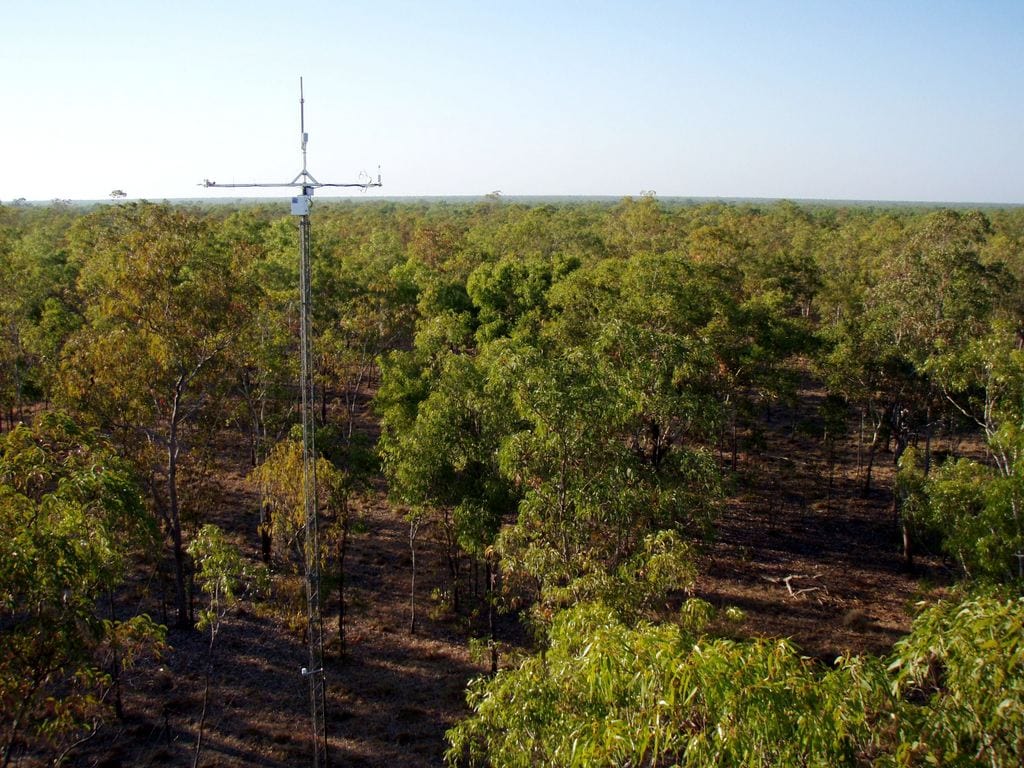New research from Australia’s prestigious Centre of Excellence for Climate System Science has laid down some vital stepping stones for further improving the models we rely on for future climate predictions. By providing model-ready data on southern hemisphere ecosystems, TERN has enabled this global scale analysis that provides important benchmarks for evaluating the predictability of climate models.

between the Earth’s surface and the atmosphere
collected by TERN’s national network of OzFlux
towers have been used to improve empirical
climate models
Land surface models (LSMs) represent the Earth’s surface within the climate models that underpin most projections of future climate and inform impact, adaptation, and policy decisions. LSMs such as Australia’s CABLE model are also routinely used in weather prediction and water modelling.
“LSMs are vital but, unfortunately, they sometimes don’t perform as well as they should,” says Ned Haughton from the ARC Centre of Excellence for Climate System Science (ARCCSS), hosted by the University of New South Wales.
Climate modellers like Ned know this because they test the accuracy of LSM predictions against simple yet highly accurate empirical models that represent data collected in the field.
“LSMs need to reflect real-world behaviours of vegetation and soil,” says Ned. “Empirical models are black-boxes and tell us little about the physics, but they do accurately model the overall behaviour of the system, and so they can act as benchmarks for LSMs. By improving the performance of empirical models, we can help to track down problems in LSMs and improve them.”
Ned and his colleagues at the ARCCSS have shown that empirical models can be substantially improved using data on carbon, water and energy exchange between the Earth’s surface and the atmosphere which are provided by TERN’s national research data collection network of OzFlux towers and our partners that make up the global FLUXNET network.
“By nailing down the key meteorological variables that provide predictive power in empirical models, we’ve been able to show that substantial performance improvements are possible. These act as important benchmarks for evaluating the behaviour and predictability of empirical climate models that can be used as a baseline for future studies.”
Director of the ARC Centre of Excellence for Climate Extremes, Professor Andy Pitman, says that the micrometeorological data openly provided by TERN are a particularly noteworthy component of the global dataset used in the study.
“TERN-delivered flux data are a hemispheric anomaly, in the sense that there are few observations over the whole southern hemisphere and even fewer in the tropics,” says Andy. “TERN data from the savannas, arid regions and tropics are therefore amongst the most valuable measurements taken, not merely for Australia, but on a world stage.”
- The research discussed in this article has been published in Geoscientific Model Development. Please contact Ned Haughton for more information
- Land-atmosphere flux data collected from around 30 TERN Ecosystem Processes monnitoring sites are openly available via the TERN Data Discovery Portal and via the global FLUXNET data portal.
- For more information on TERN’s support of Australia’s ARC Centres of Excellence contact us.








